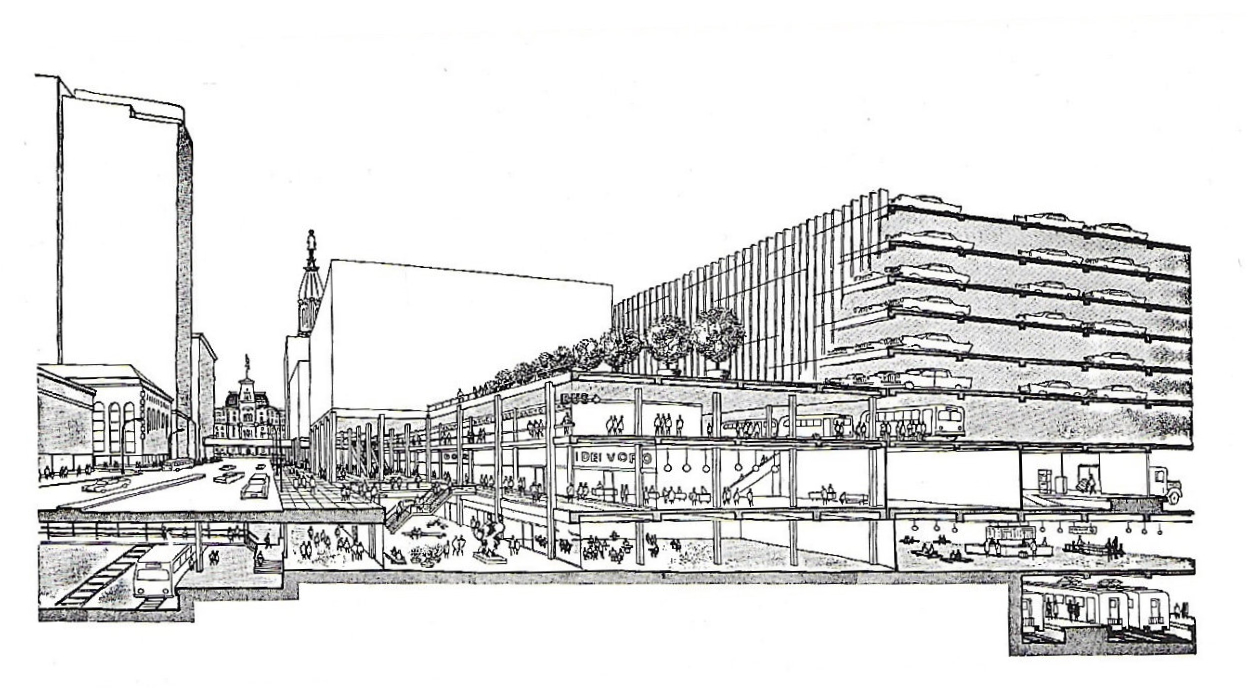Chapter II: The theoretical basis
Traffic architecture: 118–120
There will be many places where there are buildings of historical or architectural value, squares, trees or pervading character which no one would wish to change
Traffic architecture
118There is a new and largely unexplored field of design here, but it involves abandoning the idea that urban areas must necessarily consist of buildings set along vehicular streets, with one design or the buildings and another for the streets. This is only a convention. If buildings and access ways are thought of together, as constituting the basic material of cities, then they can be moulded and combined in all sorts of ways many of which are more advantageous than the conventional street. A useful term with which to describe this process is ‘traffic architecture’ which conveys the idea of buildings and building groups being purpose-designed for the efficient handling of traffic.

Although traffic architecture techniques would involve a ‘new look’ for urban areas, in many ways it could still result in an ‘old look’ freed from the domination of the motor vehicle. To take an extreme but simplified case, the central area of a town might be redeveloped with traffic at ground level underneath a ‘building deck’. This deck would, in effect, comprise a new ground level, and upon it the buildings would rise in a pattern related to but not dictated by the traffic below. On the deck it would be possible to re-create, in an even better form, the things that have delighted man for generations in towns—the snug, close, varied atmosphere, the narrow alleys, the contrasting open squares, the effects of light and shade, and the fountains and the sculpture. The deck would be so literally new ground that buildings could be erected upon it and in due course taken down and replaced, and sites could be sold or leased in the normal way.
120The prospects must, however, be kept within bounds. There will be many places where there are buildings of historical or architectural value, squares, trees or pervading character which no one would wish to change. This does not rule out traffic architecture, but it makes it much more complicated. It means the intricate combination of the old and the new. There will be genuine precincts of older buildings at ground level merging into more complex multi-level arrangements. Here pedestrians will be down in normal streets with a minimum of traffic, there they will be up of a lacework of paths with views down to the traffic. Here vehicles will be below ground, there they will be on the surface. The presence of existing buildings which cannot be redeveloped will unquestionably affect the amount of traffic that can be planned for. But environmentally they provide the challenge for the creation of urban areas of great variety and interest.